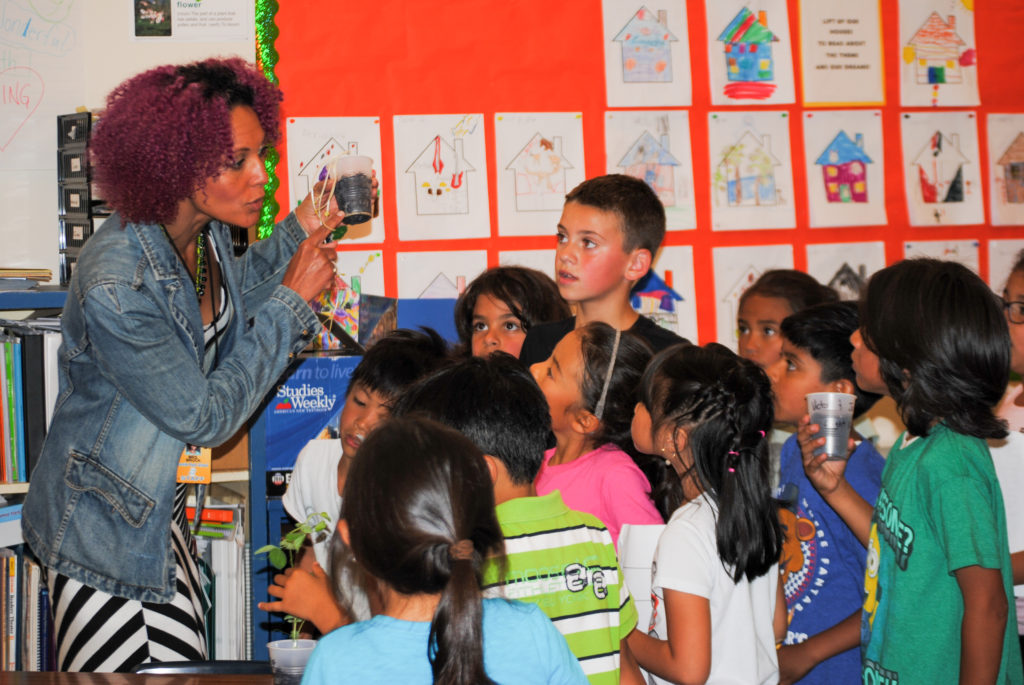On July 29, 2015, Ten Strands’ Founder Will Parish published a persuasive blog entitled A Goldilocks Moment for Environmental Literacy. With Trump’s upcoming inauguration, I returned to Will’s piece with a sense of urgency to evaluate whether we indeed still have the right mix of conditions to successfully bring environmental literacy to California’s 6.2 million K–12 students, and instill a compelling model for other states and nations to follow.
Why is this so critical? Because when students understand the connections between people and the natural world, they can better understand the consequences of human activity and work to diminish harm to our planet.
Here’s Will’s list of July 2015 conditions, and my evaluation of its current relevance:
California now has a Blueprint for Environmental Literacy, as do 20+ other states.
- YES. And importantly, under the leadership of Ten Strands, California’s Environmental Literacy Steering Committee is now engaged in the critical work of implementing the Blueprint.
The California Department of Education invited Ten Strands into the process of revising the Science Framework to ensure that the Environmental Principles and Concepts are appropriately interspersed throughout the Framework in accordance with California law.
- YES. See Gerald Lieberman’s Ten Strands’ blog post dated November 2016 A Watershed Moment for Environmental Literacy for all K-12 California Students, announcing the adoption of a new Science Curriculum Framework with explicit focus on Environmental Principles and Concepts which are certain to engage students as active participants in learning, where they do science rather than just read about it.
The California-adopted Next Generation Science Standards (NGSS) make environmental connections throughout.
- YES.
At the U.S. Conference of Mayors last month, mayors across the country in cities including Los Angeles, San Francisco, Sacramento, Fremont, Boston, Phoenix, and Seattle passed a resolution calling for the “swift implementation” of climate education in high schools nationwide.
- YES. Cities and States can significantly impact climate education. As the sixth largest economy in the world and the twelfth largest emitter of greenhouse gases, California’s population and leadership have largely acknowledged our role in both contributing to and implementing solutions to the vital issue of global warming. California was the first U.S. state to pass efficiency standards for auto emissions, energy efficiency, and renewable energy, not to mention appliances and buildings. Each time California acted other states followed, and national standards often developed. California now has the opportunity to expand its exemplary leadership record and set the model for bringing environmental literacy to all youth.
The California Parent Teacher Association (PTA) adopted a resolution in May stating that students and parents need to become environmentally literate around climate change’s impact on children’s health.
- YES.
Pope Francis published his encyclical “to all people of good will” in June, imploring all to interpret “dominion over earth” to mean that we must take later generations into account as we consume resources. We must not be so profligate in our consumption of earth’s resources that we leave future generations a decimated world.
- YES.
Govern for California’s David Crane recently reminded me that under our federalist system, states have primary responsibility for most domestic policy in the United States. It is the states that develop and recommend curriculum frameworks, evaluate instructional materials, and recommend standards for academic content and accountability. States, not the federal government, educate the vast majority of the nation’s schoolchildren and three-quarters of all college students. With the incoming administration’s recent appointments, I have even greater respect for the foresight of our nation’s founders. As the majority of California’s population acknowledges the importance of acting to ensure a healthy environment and planet, California’s elected representatives, agencies, and nonprofits will press forward to lead the effort in prioritizing environmental literacy, with Ten Strands and our strategic partners indeed out front.




2 Responses
There is even more great news coming along this year.
In 2017, we will have major sessions about Environmental Literacy and California’s Environmental Principles and Concepts (EP&Cs) in both the Science and History-Social Science Framework “rollouts.” This will get us out in front of several thousand more teachers across California.
Just today, I am sitting in on the first of many meetings that will produce a new “California Health Curriculum Framework.” For this framework, the guidelines call on the Framework Committee to “incorporate (into instruction) California’s approved Environmental Principles and Concepts (EP&Cs).” This represents an important opportunity to integrate concerns about environmental health and environmental justice in classroom health instruction.
Thanks for the excellent update, Jerry. I look forward to hearing about further developments!